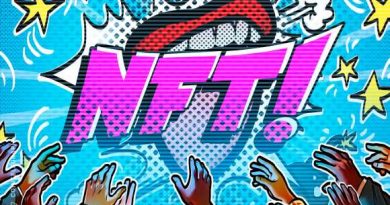Aptos Labs' Collaboration With Microsoft Sends APT Soaring By 17%
Aptos Labs and Microsoft have announced a strategic partnership to showcase the convergence of artificial intelligence (A.I.) and blockchain technologies.
Aptos Labs, a leading blockchain developer, and Microsoft, a key backer of A.I. advancements through OpenAI, are joining forces to create the innovative Aptos Assistant, a ChatGPT-powered chatbot designed to provide users and developers with comprehensive information and analysis of the Aptos ecosystem.
Aptos Labs And Microsoft Forge Alliances For Blockchain Development
According to a report by Yahoo Finance, unlike previous endeavors in the crypto-related A.I. space, which primarily revolved around licensing OpenAI’s ChatGPT, Aptos Labs’ collaboration with Microsoft ventures beyond boundaries.
The partnership encompasses various facets, with Aptos Labs hosting validator nodes on Microsoft’s Azure cloud computing platform, integrating its programming language, Move, into Microsoft’s popular coding platform, GitHub Copilot, and exploring opportunities to connect with major financial institutions seeking to build blockchain-powered applications on Azure.
Rashmi Misra, General Manager of A.I. and Emerging Technologies at Microsoft, expressed excitement about the fusion of A.I. and blockchain, stating:
The intersection of A.I. and blockchain is among the most interesting combinations of emerging technologies. By fusing Aptos Labs’ technology with the Microsoft Azure OpenAI Service capabilities, we aim to democratize the use of blockchain.
Aptos Labs has already secured substantial funding of $400 million from investors, according to Crunchbase, highlighting the confidence in their technological prowess. The collaboration with Microsoft further solidifies its position as a formidable player in the blockchain space.
While A.I. startups have dominated funding in 2023, raising nearly $25 billion, compared to around $3.6 billion for crypto ventures, Mo Shaikh, Co-founder and CEO of Aptos Labs, believes that A.I. and blockchain are not mutually exclusive.
Shaikh emphasizes the importance of blockchain’s ability to provide verified and accurate information, minimizing the risk of A.I. models generating false statements or hallucinations.
The practical implications of this collaboration are still unfolding. Still, Shaikh underscores elements such as the A.I. assistant and integration into Github Copilot to represent a larger vision of deep integration and co-development between Aptos Labs and Microsoft.
APT Rebounds As Collaboration With Microsoft Reignites Investor Interest
APT, the native token of the Aptos blockchain, experienced a significant surge of over 17% following the announcement of its partnership with Microsoft.
This surge marked a crucial turning point after a prolonged downtrend that persisted since the beginning of February. Notably, APT had reached an all-time high of $20 before succumbing to the downward trend.
The decline in APT’s price can be attributed to an unlock event on February 12th, where Aptos released 4.5 million APT tokens.
The unlock event, involving the release of a significant number of tokens, resulted in increased selling pressure, leading to a continuous decline in APT’s price.
However, the recent partnership announcement with Microsoft has injected new life into the token’s value, reigniting investor interest and resulting in a remarkable price surge.
Despite experiencing some retracement, APT still holds a 10% profit since the disclosure of the partnership with Microsoft. It is currently trading at $7.3340, representing a 63% decrease from its all-time high reached in January 2023.
Overall, investors have responded positively to this news, recognizing the potential of the Aptos-Microsoft partnership to drive innovation and expand the reach of the Aptos blockchain. The substantial surge in APT’s price reflects growing confidence in the project’s prospects and underscores the significance of this collaboration.
Featured image from iStock, chart from TradingView.com
Source: Read Full Article


